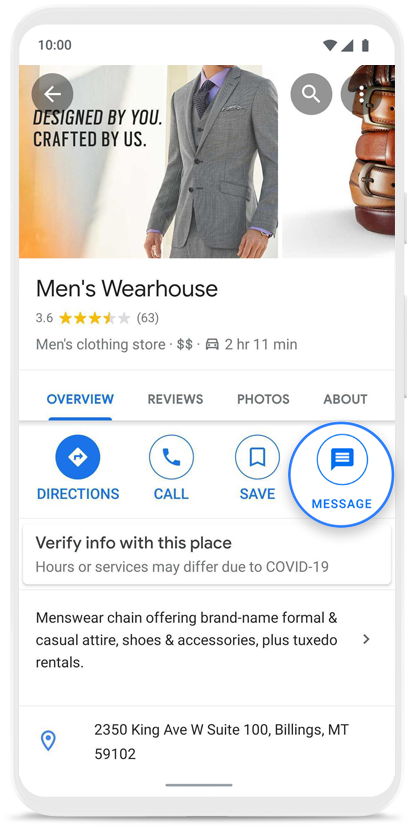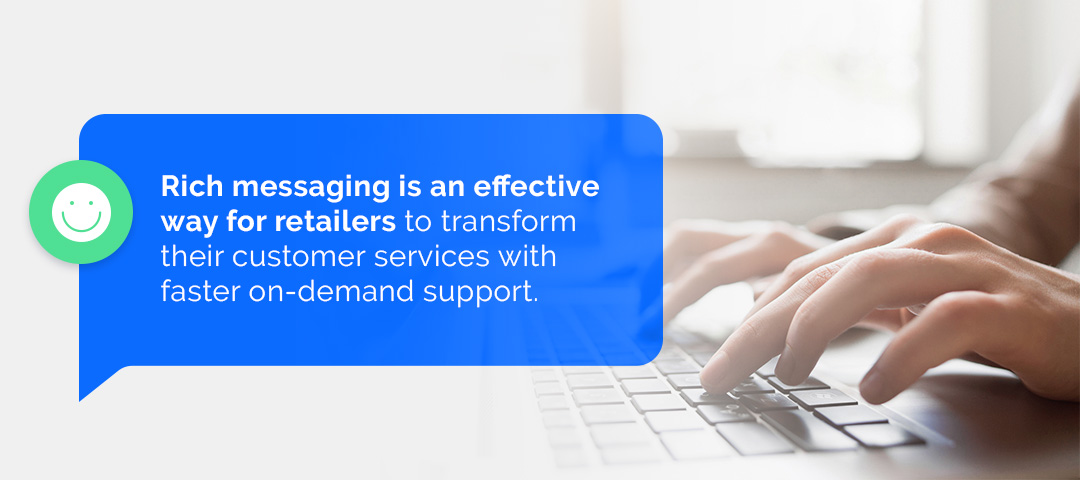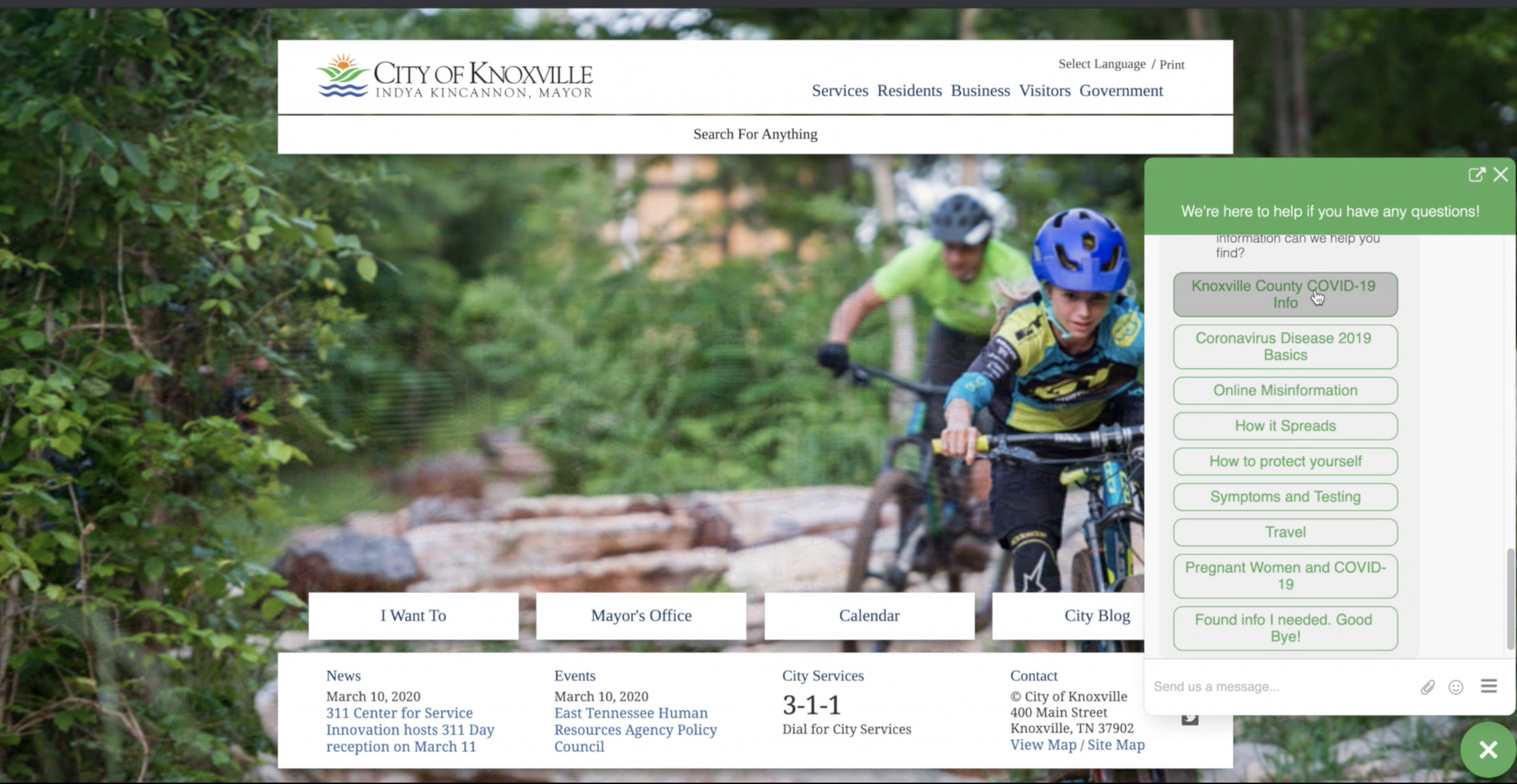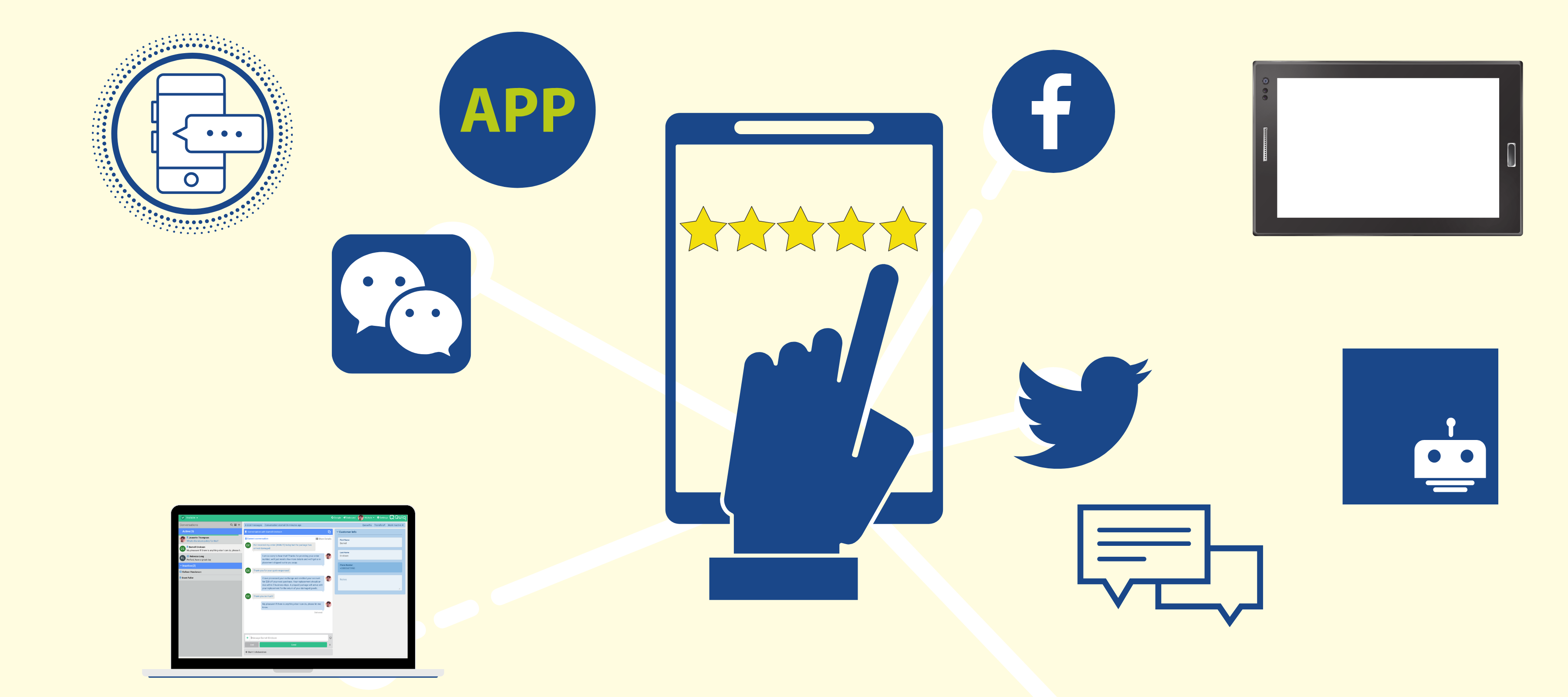These days, consumers prefer the convenience of shopping online and are continuing to shift their spending from in-person to eCommerce. In fact, as a percentage of total retail sales, eCommerce sales rose from 11.3% in April 2019 to 14% in April 2020. Why? Because online shopping is the quickest and easiest way for today’s consumers to locate the products they want. Online shopping also comes with the added benefit of being accessible from anywhere, whether that means buying a new laptop on a train during a work commute or ordering a prescription from a mobile device while in the waiting room of a doctor’s office.
As more people transition to online shopping, technology has been continuing to evolve to meet customer demands. However, some companies have been overlooking a critical and budding area that has huge potential to grow their businesses: rich messaging transactions.
How Rich Messaging Can Help Shoppers
Rich messaging is the future. The rise of rich communication services (RCS) is due to consumers’ demand for the rich, interactive messaging experience on Over The Top (OTT) messaging services like Facebook and WhatsApp.
Engaging with customers in more meaningful ways through messaging and chat applications has become one of the key drivers of increased online sales and repeat purchases. Rich messaging provides an interactive and convenient channel for customer engagement.
With such services now being integrated into messaging apps to provide a more browser-like user experience, the future of rich messaging is positioned for growth by offering additional customization and personalization. In Japan and China, almost every eCommerce task, from making payments and gifting people money, has been integrated into rich messaging apps. The Western and European markets are likely to be revolutionized by rich messaging in the same way.
Rich messaging allows effortless, straightforward communication between customer service representatives and customers. Both parties can share interactive media like images and videos, allowing customers to view products within the message window rather than being directed away from the chat to a website. Additionally, consumers can easily interact and respond using suggested replies, which make responses as simple as a tap of a button and can even enable secure purchases. When customers can view, select, add to cart, and purchase all within the messaging window, that’s rich messaging at its best.
Rich communication services simplify shopping with the convenience that customers love.
Rich Communication Services
Customer preferences and technologies are continually changing, so businesses must also evolve by adopting new competencies, skills, and capabilities like rich messaging services.
Learn More About the End of Google Business Messages
Through Google Business Messages, customers can initiate conversations with brands from the world’s largest and most popular search engine. Popular entry points like Google Maps and Google Search position Google’s Business Messages as an extremely convenient method for getting in touch with businesses.

The digital-first consumers of today have high expectations when it comes to communicating with businesses online. To meet these expectations, Google introduced an upgraded messaging experience to combine the already popular business messaging channel with a visually rich messaging format, including rich media, branding, interactivity, and analytics to deliver a more engaging customer experience.
Many different industries use Google RCS to enhance customer experience, including retail, hospitality, credit unions, and service providers.
Apple Business Chat is the third name on this list of top rich messaging communication channels. Customers can use Apple Business Chat to reach out to businesses directly via a wholly integrated and native Apple Messages experience on their iOS devices.
Customers can find businesses easily and immediately start conversations from Safari, Maps, Search, and Siri. Businesses can answer their customers’ queries, resolve their issues, and help them complete transactions using Apple Play from their iOS devices.
Advantages of Rich Messaging for Retailers

Here are some applications of rich messaging and shopping — customer service representatives can:
- Provide recommendations
- Suggest alternative products
- Offer helpful resources
- Explain custom options
- Process instant payments
Another critical feature of rich messaging is the verified sender process, which verifies every business that uses rich messaging. This feature helps businesses and retailers build trust with their customers by including the official brand name, logo, brand color, and font in all their messages.
How Retailers Can Use Rich Messaging to Improve the Shopping Experience
With rich messaging, businesses and customers can exchange high-resolution images and videos and can even complete secured sales transactions — all within a messaging conversation. Rich messaging provides a modern messaging experience that is best aligned with customer expectations.
For retailers, the biggest benefit of rich messaging is the ability to drive more conversions by sending personalized messages that are more visually interesting, provide more context for the reader, and are easier to respond to. Some additional benefits of rich messaging that help to drive conversion are:
- Convenient product carousels for customers to scroll through
- Fast and personalized answers for each customer engaging with chatbots or live agents
- Direct assistance with actionable solutions in one conversation
- Sufficient information for a customer to make a purchase at their convenience
- The capability to process transactions directly within chat windows
8 Ways Retailers Can Transform Customer Services With Rich Messaging
Here are nine ways retailers can transform customer services with rich messaging.
1. Faster and More Accurate Responses to Customers Than Phone Calls and Emails
People have become used to instant gratification. Customers expect faster responses to their queries and want to communicate with business representatives one-on-one.
Traditional channels like phone support, however, are no longer providing the fast support that modern consumers have come to expect. In fact, Harvard Business Review recently reported that call center hold times have increased by as much as 34%.
Conversely, rich messaging is an effective way for retailers to transform their customer services with faster on-demand support. For example, if a customer is searching on their iPhone for a business that has Apple Business Chat, they can just tap the message icon to start conversing with the business directly and quickly receive answers to their queries.

2. Aid Customers in Completing Secured Transactions
The concept of rich messaging centers around optimizing customer experience while making business interactions as convenient as possible. From browsing a business website to completing their transactions securely, rich messaging can support customers through their entire buying journey.
RCS has helped retailers transform customer experience with site navigation aids to find options within a product assortment. Moreover, customers don’t need to leave the messaging channel to finish their transactions.
3. Engage Customers With Media That Tells a Story
The ability to share hi-res images, recordings, videos, and even GIFs up to 10 MB per message has been a game-changer for conversation-based commerce. Through these more advanced media formats, customer service agents can now easily aid their customers in their purchases or troubleshoot issues.
For instance, if a customer wants to install a new security system but needs to understand whether their current hardware is compatible with the retailer’s security hardware, rich messaging can enable the shopper to simply send a picture of their current setup to an agent for confirmation. In this example, the shopper does not need to schedule an appointment and wait days for the technician to visit them and check it personally. This means less time and hassle for both the customer and the business.
4. Help Customers in Making Reservations
Rich messaging is not limited to selling tangible goods and physical products. Consulting companies, service providers, and travel and hospitality businesses can all use rich messaging to support tasks like booking an appointment or making a reservation.
Hotels and resorts can send reservation cards to prospective guests with rich messaging, driving instant bookings. For example, travel agencies can employ rich messaging to enable travelers to book a houseboat in Bali for six nights from their phone without ever having to call or wait on hold.
5. Share Coupons and Promotions That Are Visually Engaging
Sharing dynamic, visually rich coupons and promotions is simple with RCS. Consumers are more likely to redeem mobile-delivered promotions and coupons since they are easier to use than paper coupons.
Adding engaging media like hi-res images, videos, and carousels brings more engagement. Retailers can share scannable QR codes and coupons with picture messages via rich messaging.

6. Help Customers With Product Registration
One of the most powerful yet often overlooked messaging opportunities is product registration reminders. Any retailer selling a product with a warranty, post-purchase offers, or support wants to get their customers engaged. However, product registration is often a boring and manual process for consumers.
Employing RCS enables retailers to engage customers in a more interactive and innovative product registration process and can transition seamlessly to live support if customers have any questions or concerns.
7. Build Trust With Customers With Identity Verification
With online scams becoming more commonplace, consumers are rightly becoming wary of giving out their contact information, which can be a big challenge for eCommerce companies. Many users have blocked numbers and stopped receiving further communication from businesses they were interested in due to fear of scams.
The verified sender feature of rich messaging helps businesses build trust in the market and with their customers. Companies that go through this thorough verification process can use their official brand name, colors, logo, and font in their messages. Customers know they are communicating with a trusted brand and are more likely to engage.
Rich messaging helps to establish trust with an audience. Customers have the confidence that the information they share is private, secure, and stored safely, even when they receive messages from a business they had engaged with previously, such as a promotion or a warranty reminder.
8. Personalized Shopping Experience for Premium Customers
Businesses can provide personalized shopping experiences, powered by multimedia, to their loyal and VIP customers via rich messaging channels. A fun way to do this is by kick-starting a conversation with automated messaging that shares multimedia messages.
From there, a sales executive can easily help customers choose options and explore product customizations that suit their needs. This premium service is especially advantageous when helping loyal customers remotely.
Make the Most of Customer Interactions With Quiq
It’s easier than ever to use mobile technology to connect with customers for a better experience. Make the most of existing technology with Quiq.
Contact us to learn more about how Quiq will digitally transform your business — and try a demo of our software today.



 When Kim Essensa, Stio’s Customer Experience Manager, joined the company in June of 2018, Stio had been experiencing annual growth rates of 52 percent. In the second quarter of 2018, Stio’s growth accelerated to an impressive 70% year over year.
When Kim Essensa, Stio’s Customer Experience Manager, joined the company in June of 2018, Stio had been experiencing annual growth rates of 52 percent. In the second quarter of 2018, Stio’s growth accelerated to an impressive 70% year over year.
















 Customer Preferences
Customer Preferences
 Competition
Competition Cost
Cost Scaling
Scaling